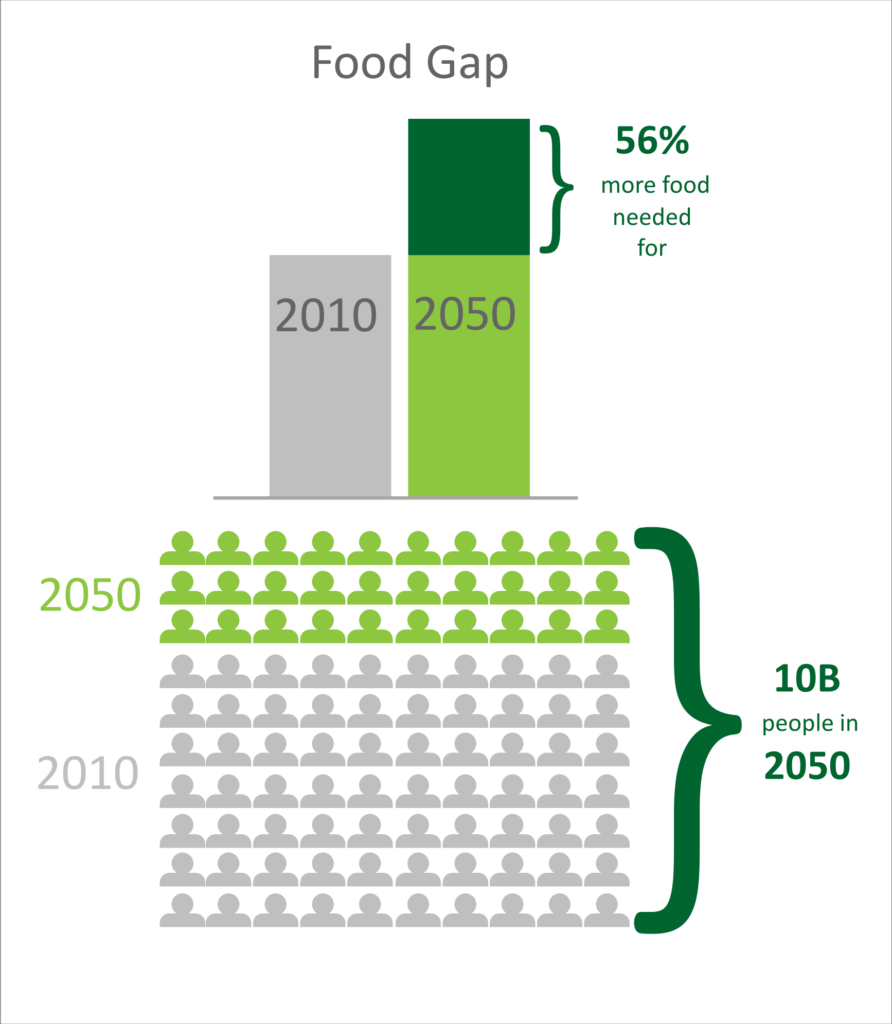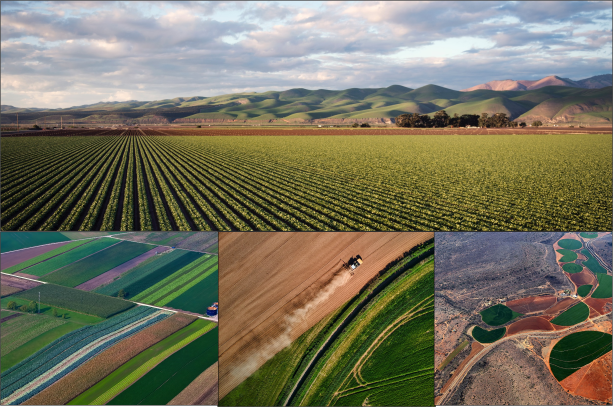Food provision under ever more challenging environmental conditions might soon become a central subject for decision-makers worldwide. In June 2020, Contracts2.0 researchers participated in the European Association of Environmental and Resource Economists (EAERE) conference. The session “Food provision in the 21st century”, organized by Prof. Mordechai Shechter, brought together researchers from different disciplines examining how to feed the world’s growing population sustainably. In Contracts2.0, we research value chain approachesare cooperation models to valorise environmental public goods within value chains. To ensure consumer trust, companies increasingly demand greater transparency about the management and delivery of public goods on supplier farms. S... More to support the transformation of the agricultural production system.
Food provision challenges
By 2050 the world’s population is projected to reach a staggering 10 billion people. To keep pace with the growing population’s demand for food, supply must grow by 56 percent by 2050. At the same time, the farming system needs to reduce its impact on the environment.1 Currently, half of the world’s food is produced in an unsustainable way, which in the medium term will further deteriorate natural systems’ productive capacity. Declining biodiversity, water overexploitation and pollution, and the loss of fertile soils are symptoms of the current agricultural practices. Therefore, it is a pressing question whether it is possible to provide enough food for a growing global population while maintaining environmental goals?2

Figure 1. By 2050 global food production needs to increase by 56 percent. Source:
wri.org/sustfoodfuture
Scenarios and solutions
The session presented solutions that included the consumption side (e.g., diet changes, reduced food waste) and the production side (e.g., water use, fertilizer use, land management changes, irrigation). Prof. Dieter Gerten (Potsdam Institute for Climate Impact Research) showed scenarios under which on-farm water management can simultaneously boost crop yields and decrease water use. Dr. Claudia Ringler (International Food Policy Institute) emphasized the critical functions of groundwater and presented possible scenarios for its conservation. Yael Pantzer (Slow Food Europe) focused on access to good, clean, and fair food, also highlighting cultural and political aspects. International social justice plays a critical role, as the needs and objectives of low-income countries might differ substantially from those of European countries. She stressed that food security is not only about the production of sufficient amounts of food but also about its quality and accessibility.2
The presented scenarios and solutions show that it is possible to halt environmental deterioration from agricultural activities and maintain food security for a growing population. However, the question remains how mankind will make the necessary changes to deal with the many challenges. Notably, biodiversity loss and climate change are the most burning topics and call for immediate radical changes in food production and consumption. If we continued business as usual, we will soon transgress planetary boundaries.3
Contracts2.0 research on eco-labels
In Contracts2.0, our research supports the necessary transformation towards a more sustainable food system. One example of our work is creating collaborative models to include the value of agri-environmental public goodsGoods where access to the good cannot be restricted and where use by one individual does not reduce availability to others. See also: Environmental Public Goods More in product prices. Accomplishing this requires understanding consumers’ demand for environmentally-friendly practices in food production. In 2020 we carried out qualitative interviews with experts in the food industry to explore their preferences and expectations for labeling products for ecosystem services and biodiversity. Labels could signal to consumers the types of public goodsGoods where access to the good cannot be restricted and where use by one individual does not reduce availability to others. See also: Environmental Public Goods More produced by farmers, whose work and fields they usually cannot observe, potentially increasing their willingness to payMaximum monetary amount an individual would be willing to pay in exchange for a particular good or service (Cameron & James, 1987). It can be used to describe people’s preferences, aggregated over individuals to estimate a v... More a price premium. The results, presenting the food industry’s views of product labeling for the effective and efficient provision of ecosystem services, will be published in a paper under the lead of Christoph Schulze.
Currently, we are conducting a study assessing consumers’ willingness to payMaximum monetary amount an individual would be willing to pay in exchange for a particular good or service (Cameron & James, 1987). It can be used to describe people’s preferences, aggregated over individuals to estimate a v... More a price premium on grocery products labeled as produced by farmers who engaged in nature protection activities. So-called eco-labeling can help to increase the market share of environmentally friendly products, create bottom-up pressure, and incentivize food producers to change their practices. We will assess the demand for eco-labeled products and how they relate to organic products.
Achieving change
The research on industries’ and consumers’ demand for eco-labels is only a snap shot of all of our efforts in Contracts2.0. Together with stakeholders across Europe we develop agri-environmental contracts that fit regional contexts and objectives. With our research we make a small contribution to the sustainable transformation of the agricultural production system in Europe. However, to achieve lasting global change much effort is needed from all of us to reduce the growth in food demand, increase food production without expanding agricultural land, reduce emissions from agricultural production and protect and restore natural ecosystems.
To learn more about the innovative contracta formal, written agreement for a specified duration signed by (at least) two parties. In Contracts2.0, we acknowledge the existence of informal contracts but use formal contracts to focus the research. More designs in Contracts2.0 follow these links:
- Limburg – Netherlands
- Groningen – Netherlands
- Koolstofboeren – Belgium
- Gulpdal – Belgium
- Northwest England – UK
- Hautes Pyrenees – France
- Madrid Region – Spain
- Bornholm – Denmark
- Agora Natura – Germany
- Hipp – Germany
- North Rhine Westphalia – Germany
- Örseg National Park – Hungary
- Unione Comuni Garfagnana – Italy
References:
1 Searchinger, T., Waite, R., Hanson, C., Ranganathan, J. (2019). Creating a sustainable food future. A menue of solutions to feed nearly 10 billion people by 2050. World Resources Institute, Washington DC.
2 Policy Session: Food provision in the 21st century, Organizer and Chair: Prof. Mordechai (Moti) Shechter
3 Gerten, D., Heck, V., Jägermeyr, J., Bodirsky, B. L., Fetzer, I., Jalava, M., … & Schellnhuber, H. J. (2020). Feeding ten billion people is possible within four terrestrial planetary boundaries. Nature Sustainability, 3(3), 200-208.
Written by Katarzyna Zagórska from the Faculty of Economic Sciences at the University of Warsaw. This note was taken based on presentations given during selected sessions at the 26th Annual Conference of the European Association of Environmental and Resource Economists, which took place online on June 23 – June 25, 2021. The conference was organised by Technische Universität Berlin (TU Berlin) and Humboldt-Universität zu Berlin (HU Berlin). More information and the full programme available at the conference website: http://www.eaere-conferences.org/


